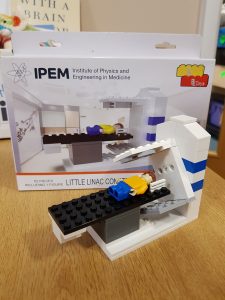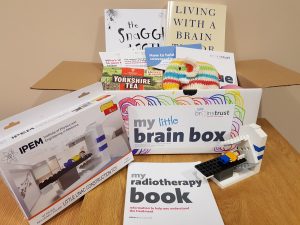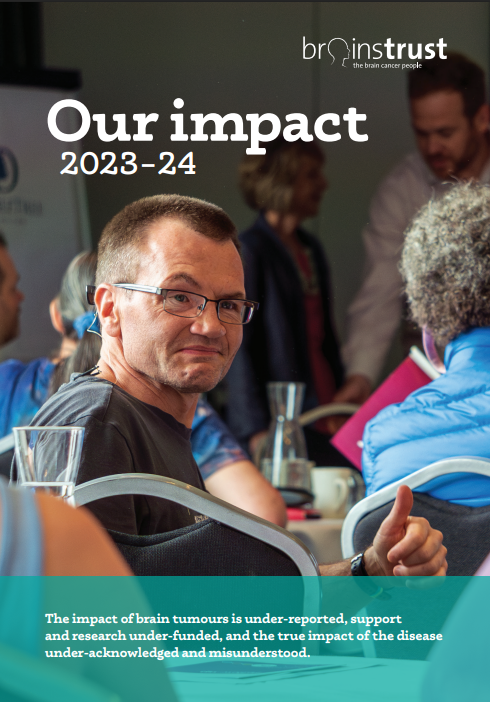Little brainstrust is delighted to add an extra tool to the ‘little brain box’ thanks to IPEM. The Little Linacs are designed to alleviate anxiety in children with a brain tumour regarding their treatment.

Going through brain tumour treatment can be incredibly daunting and overwhelming for anyone. For children with a brain tumour, who understand less about the procedures and machines often used in treatment, this can be even more apparent.
Importance of play therapy in childhood brain tumour treatments
Play therapy has a hugely important role when it comes to preparing children for their radiotherapy treatment. It develops an environment for children to feel relaxed and talk freely about their treatment. Play therapy is a form of counselling for children to express their feelings through toys and books.
Catherine Gibney, a Paediatric Oncology Play Therapist, explains more: “As a Hospital Play Specialist it is our goal to be able to prepare our children and young people for all procedures they are undertaking. It is essential to be truthful whilst building relationships, and to deliver preparation in an age appropriate fashion. The main aim for preparation is to reduce any potential trauma and misconceptions by empowering the child/young person in order for the procedure to be carried out in a calm and controlled manner”
Many childhood brain tumour patients will have radiotherapy as a treatment option. Radiotherapy preparation for children includes a variety of play therapy and activities designed to allow patients and families to familiarise with a new environment in a relaxed stress-free manner. This includes custom sticker charts and personalised photograph books to help children understand their treatment.
Little Linacs
The Institute of Physics and Engineering in Medicine (IPEM) launched the Little Linac campaign to build toy models of linear accelerators for children undergoing radiotherapy for cancer treatment in the UK.
 Khadijha, our Support Specialist for Children and Families, saw the incredible value of these models for the families that she supports: “I knew the toy that can be modelled to become a linear accelerator (radiotherapy machine), a CT and a MRI scanner would be an excellent tool for children to use to increase their understanding of medical machines they may encounter”.
Khadijha, our Support Specialist for Children and Families, saw the incredible value of these models for the families that she supports: “I knew the toy that can be modelled to become a linear accelerator (radiotherapy machine), a CT and a MRI scanner would be an excellent tool for children to use to increase their understanding of medical machines they may encounter”.
Play therapy is valued highly by parents too, including one mother of a 5 year old boy currently receiving radiotherapy:
“My son would not have gone through his radiotherapy sessions as easily as he did, if at all, without play preparation. It took away all the unknown fears and strangeness’s from the experience. It made it possible for him to receive his treatment without anaesthetic, which is a massive positive”.
Professor Mark Tooley, IPEM’s President, said: “We are delighted to be able to support brainstrust by making a donation of Little Linac kits for them to include in their little brain boxes for children”.
We know at brainstrust scanxiety is real and the fear of machines can occur. We are so grateful for the donation of 60 Little Linacs from IPEM. These will be a valuable addition to our already powerful information toolkit, the little brain box. The Little Linac is a perfect example of how play therapy can support children and reduce their anxiety when undergoing radiotherapy treatment.










